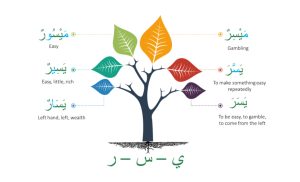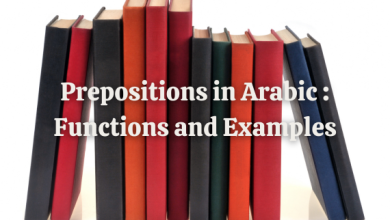Arabic, a language rich in history and culture, is known for its complex but fascinating grammar structure. Among its many intricacies, Arabic verbs and tenses stand out as particularly challenging yet essential to master. In this article, we’ll explore the basics of Arabic verbs and tenses, making them more approachable for learners.
Introduction
Learning Arabic verbs and tenses can feel like solving a complex puzzle. Imagine each verb as a multifaceted gem; understanding how to use it correctly in different tenses helps you see its full brilliance. Let’s dive in and uncover the secrets of Arabic verbs and tenses together!

The Root System
Arabic verbs are based on a root system, typically composed of three consonants. This root system forms the basis of many words, allowing for a rich and varied vocabulary. For example, the root “كتب” (k-t-b) can lead to words like “كتب” (kataba – he wrote), “كتاب” (kitab – book), and “كاتب” (katib – writer).
Verb Forms
Arabic verbs have different forms (called “باب” or “abwab”) that indicate nuances in meaning. The most common forms are:
- Form I (فعل): Basic root form.
- Form II (فعّل): Causative or intensive.
- Form III (فاعل): Reciprocal action.
- Form IV (أفعل): Causative or declarative.
- Form V (تفعّل): Reflexive of Form II.
- Form VI (تفاعل): Reflexive of Form III.
The Past Tense (الماضي)
The past tense in Arabic is used to describe actions that have been completed. It’s formed by adding specific suffixes to the verb root. For example, with the root “كتب” (k-t-b):
- كتبتُ (katabtu) – I wrote
- كتبَ (kataba) – He wrote
- كتبتْ (katabat) – She wrote
The Present Tense (المضارع)
The present tense indicates ongoing or habitual actions. It’s created by adding prefixes and sometimes suffixes to the verb root. Using the same root “كتب” (k-t-b):
- أكتب (aktubu) – I write
- يكتب (yaktubu) – He writes
- تكتب (taktubu) – She writes
The Future Tense
In Arabic, the future tense is usually formed by adding the prefix “سـ” (sa-) or “سوف” (sawfa) before the present tense verb. For example:
- سأكتب (sa’aktubu) – I will write
- سوف يكتب (sawfa yaktubu) – He will write
Imperative and Prohibitive Forms
The imperative form is used for commands or requests. It’s typically derived from the present tense form but without the prefixes. For instance, from “كتب” (k-t-b):
- اكتب (uktub) – Write!
The prohibitive form (negative command) uses “لا” (la) before the present tense verb:
- لا تكتب (la taktub) – Don’t write!
Derived Verb Forms
Arabic verbs can be extended into various derived forms to express different shades of meaning. These forms often include additional letters or vowel changes. For instance:
- Form II (فعّل): درّس (darras) – He taught.
- Form V (تفعّل): تدرّس (tadarras) – He studied intensively.
Verb Conjugation
Verb conjugation in Arabic is systematic but requires memorization. Verbs must agree with their subjects in number, gender, and person. This means each verb has multiple forms depending on the subject. For example, the root “كتب” (k-t-b):
- أنا كتبتُ (ana katabtu) – I wrote
- أنتَ كتبتَ (anta katabta) – You (male) wrote
- أنتِ كتبتِ (anti katabti) – You (female) wrote
Common Irregular Verbs
Some Arabic verbs are irregular and don’t follow standard conjugation patterns. Common irregular verbs include:
- كان (kana) – He was
- أتى (ata) – He came
- أخذ (akhadha) – He took
Practical Tips for Learning
- Practice Regularly: Daily practice helps reinforce your learning.
- Use Flashcards: Flashcards can help memorize verb forms and conjugations.
- Engage with Native Speakers: Practice speaking with native Arabic speakers to improve your fluency.
- Use Language Apps: Apps like Duolingo and Memrise can offer structured learning paths.
- Watch Arabic Media: Immerse yourself in Arabic through movies, shows, and music.
Conclusion
Mastering Arabic verbs and tenses may seem challenging, but with consistent practice and the right resources, it becomes much more manageable. By understanding the root system, verb forms, and conjugation rules, you’ll be well on your way to fluency. Remember, every language has its intricacies, but each step you take brings you closer to mastering Arabic.
FAQs
How long does it take to learn Arabic verbs and tenses?
The time it takes varies based on individual learning pace and consistency. Regular practice can lead to significant progress in a few months.
Are Arabic verbs more difficult than verbs in other languages?
Arabic verbs have unique challenges due to their root system and conjugation patterns. However, with structured learning, they are manageable.
What are the best resources for learning Arabic verbs and tenses?
Books, language learning apps, online courses, and language exchange programs are all excellent resources for learning Arabic verbs and tenses.
Can I learn Arabic verbs and tenses without a teacher?
Yes, self-study is possible with the right resources, but having a teacher can provide valuable guidance and feedback.
How important is verb conjugation in mastering Arabic?
Verb conjugation is crucial for accurate communication in Arabic. Mastering it will greatly enhance your ability to speak and understand the language.





